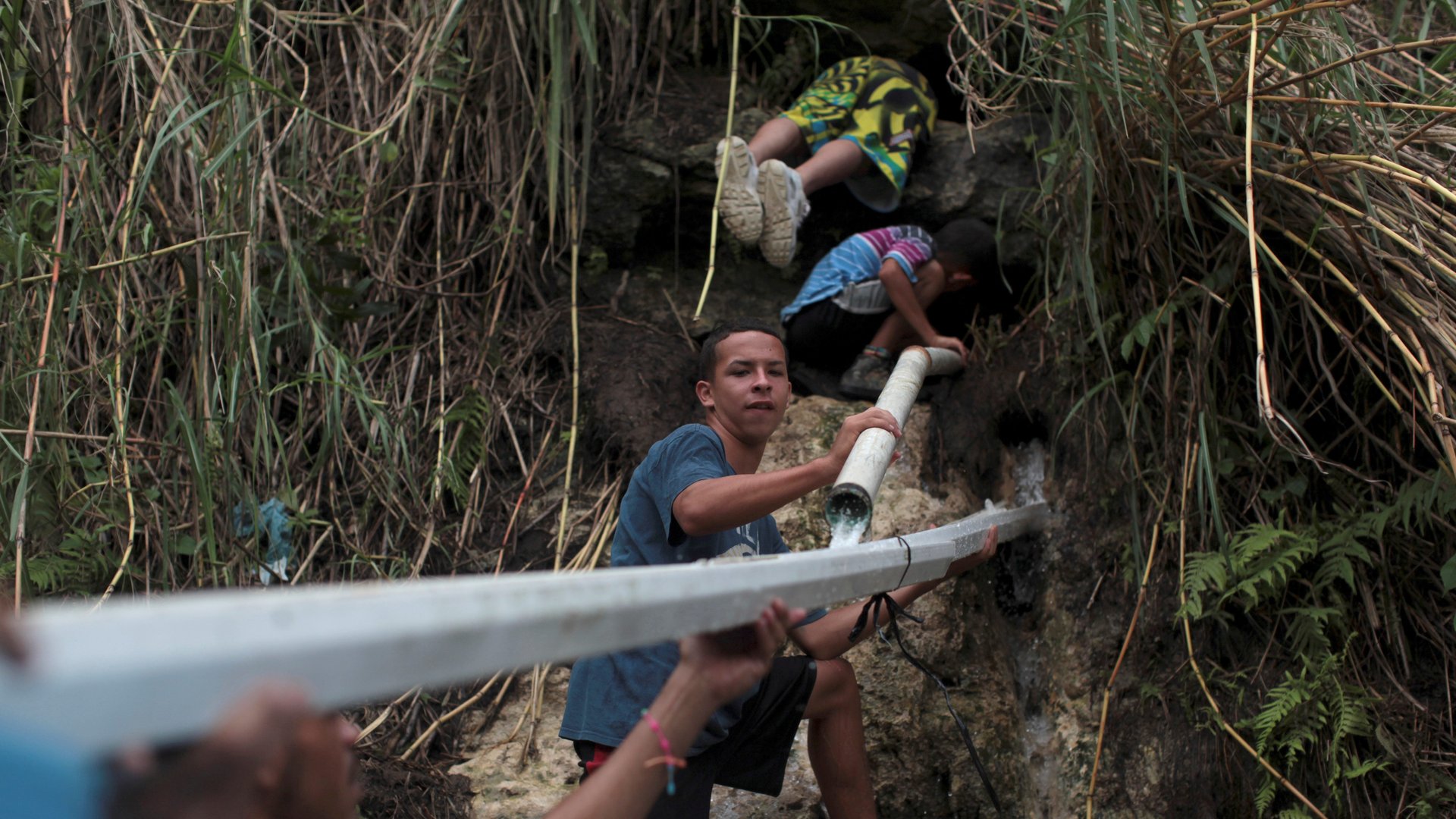Puerto Rico is becoming a textbook example of how waterborne disease outbreaks spread
The disaster in Puerto Rico wrought by hurricane Maria is still unraveling one month after it hit.


The disaster in Puerto Rico wrought by hurricane Maria is still unraveling one month after it hit.
Most of the island remains without electricity. A third of residents still don’t have running water, while those who do can’t count on what comes out of the faucet being clean. Meanwhile, pools and puddles of standing water due to recent heavy rains (link in Spanish) following Maria are primed to spread disease.
Carmen Deseda, Puerto Rico’s state epidemiologist, says the island has counted 74 suspected cases of leptospirosis, a bacterial illness transmitted through water, food, or soil contaminated by infected animal urine, this month so far. The illness causes symptoms such as high fever and vomiting and can be fatal without antibiotic treatment. The island normally reports only 60 cases a year, according to Deseda.
The US Centers for Disease Control and Prevention is still in the process of confirming those cases, but less involved tests by local labs have identified 57 leptospirosis cases already, according to local paper Primera Hora.
“The young people and children who are using areas where there is pooled water, which can be diluted with mouse urine, they can contract leptospirosis there,” Deseda told local news outlet Metro (Spanish.) She expects an increase in cases of diseases transmitted through contaminated water, given Puerto Rico’s situation.
Lack of electricity is exacerbating the problem. Without it, water treatment plants around the island remain offline. Boiling water is tough. And without widespread access to broadcast and online channels, spreading the word about contaminated water and the precautions the public should take is nearly impossible.
Though federal and local responders continue to distribute bottled water, many Puerto Ricans, particularly in hard-hit secluded areas, have been left to their own devices. Some have been using water from springs to bathe; others have been forced to use water from sewage-laden rivers, or tap it from a site deemed last year by the federal government to be contaminated with hazardous waste.
Jeremy Konyndyk, an expert in the global spread of disease at the Washington, DC-based Center for Global Development, described the situation as “textbook vulnerability to major waterborne disease outbreak” in a tweet thread, ending it with incredulity: